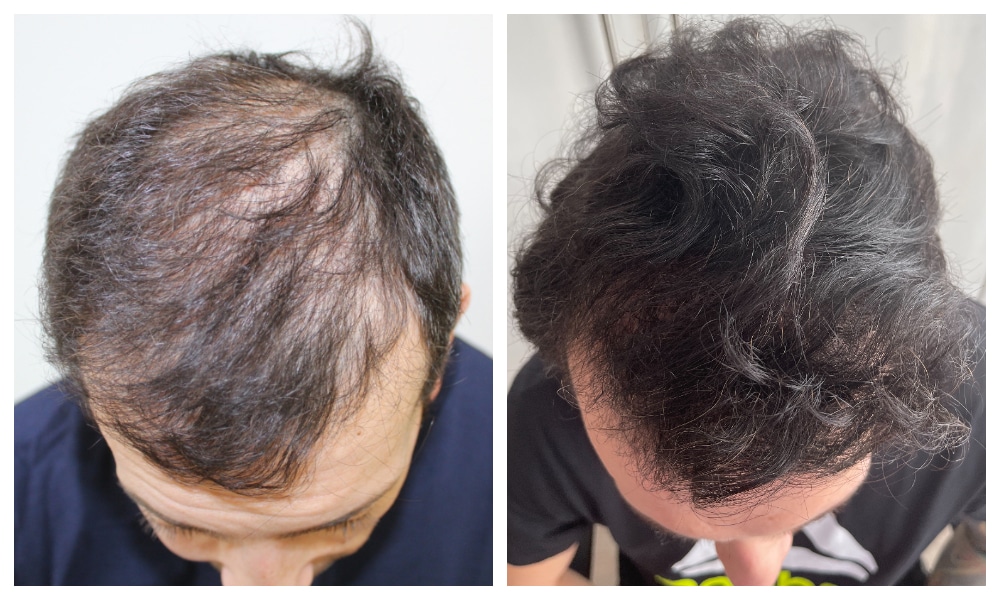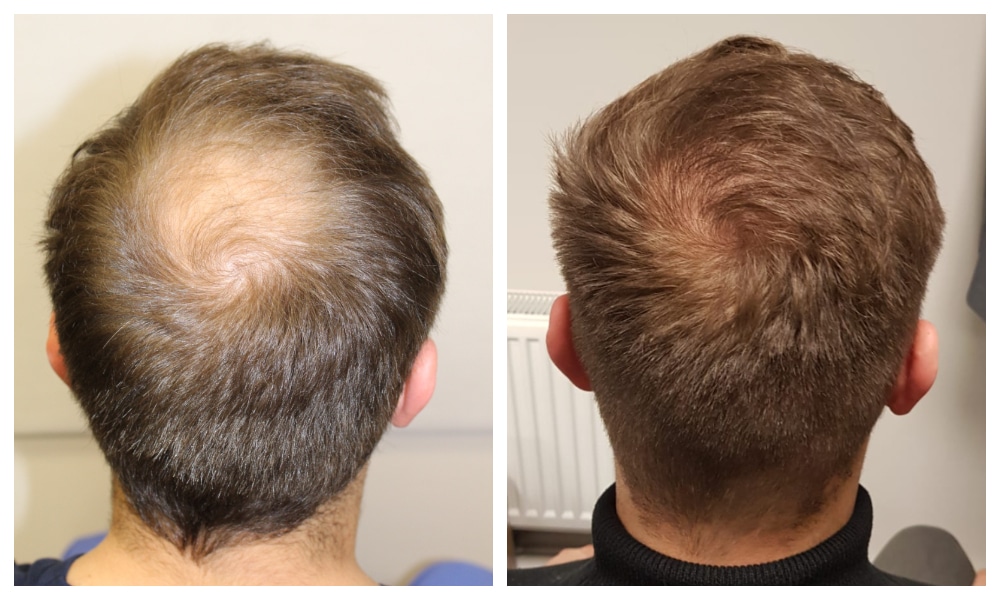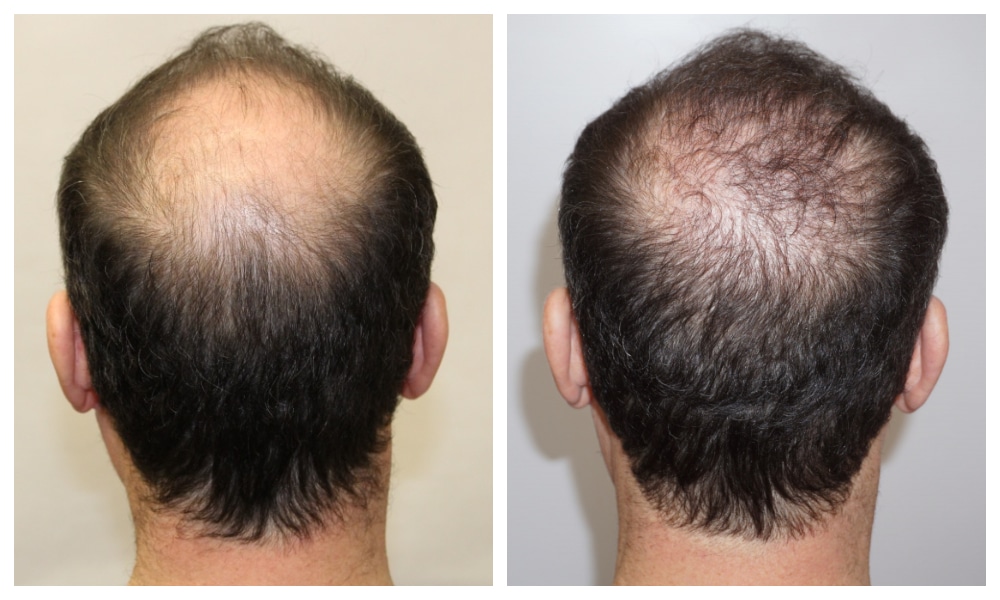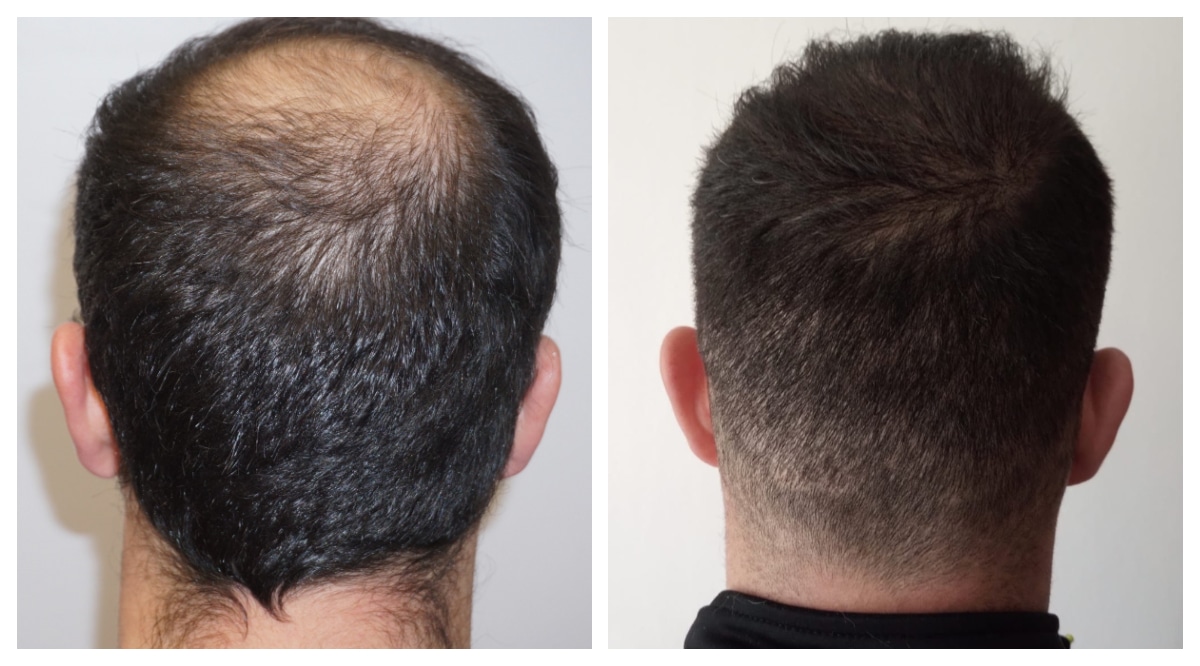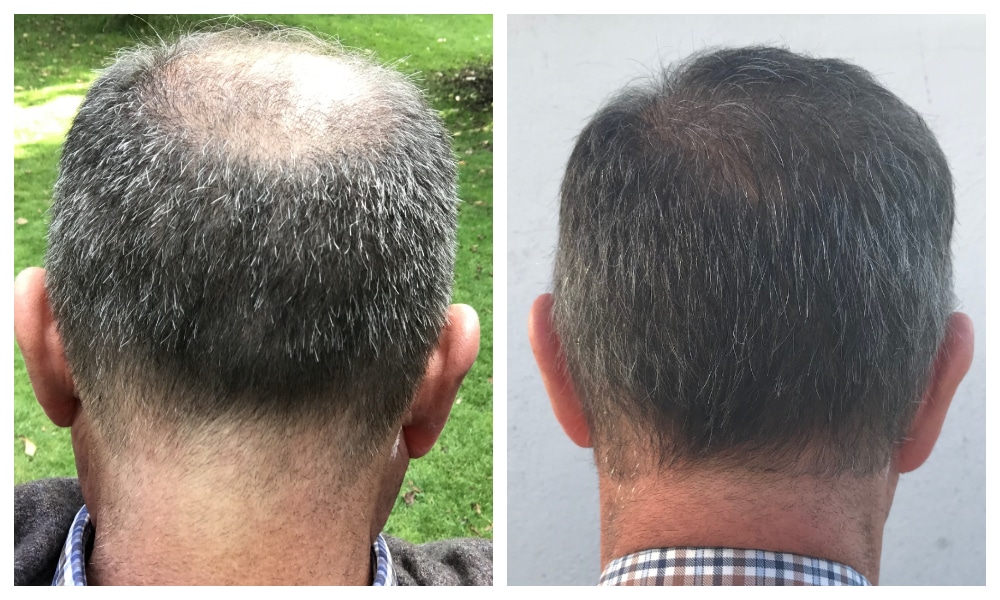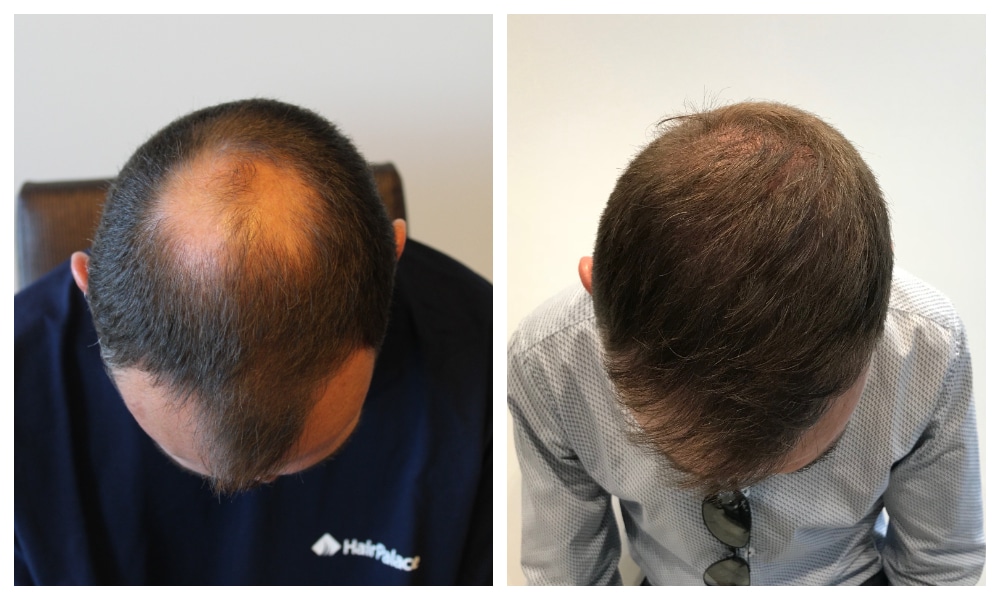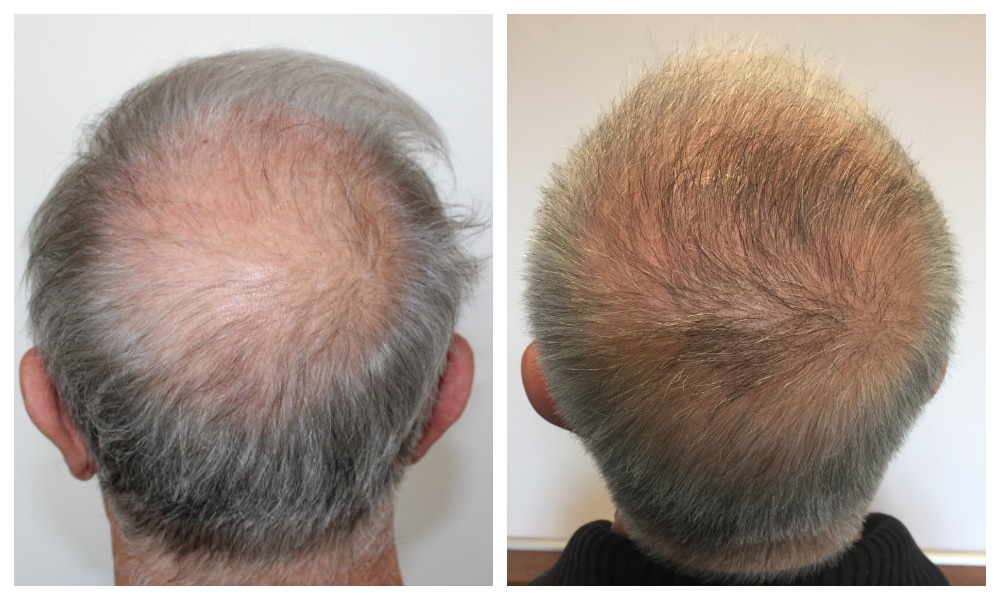Crown Hair Transplant Timeline: What You Should Expect
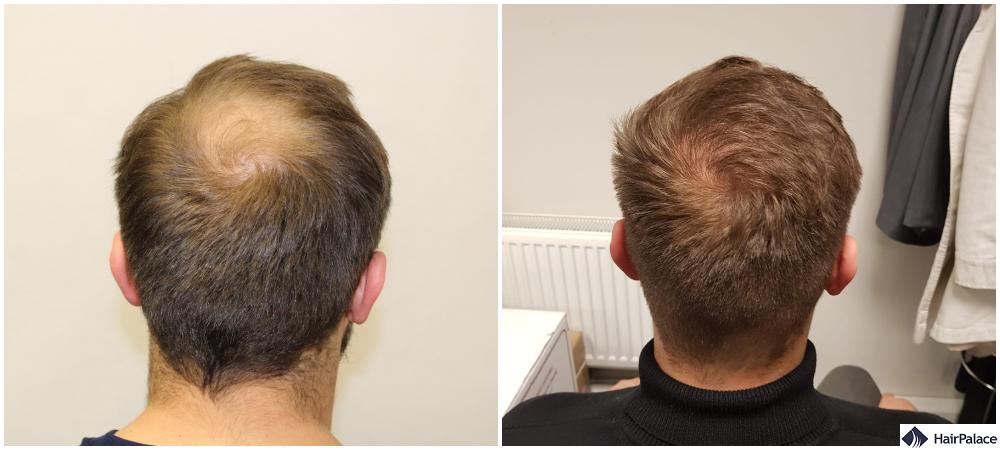
The crown hair transplant timeline is unique thanks to this region’s distinct features and unusual challenges.
In some cases, patients may require up to 15 months to see full results in this area.
Our article aims to explain the timeline of a crown hair transplant, providing a better understanding of the nature of this process.
From the immediate aftermath of the procedure to the gradual unveiling of results, the path of crown hair restoration is marked by distinct phases.
Let’s delve into the intricacies of the crown hair transplant timeline, illuminating the path from the initial decision-making to the manifestation of results, and every crucial step along the way.
- Right after the hair transplant
- First 2 months
- 4 months
- 8 months
- Final results (12-15 months)
- Why does the hair transplant crown timeline take longer?
- Hair transplant crown area results
- Hair transplant crown area success rate
Hair transplant crown area growth timeline
Right after the hair transplant procedure
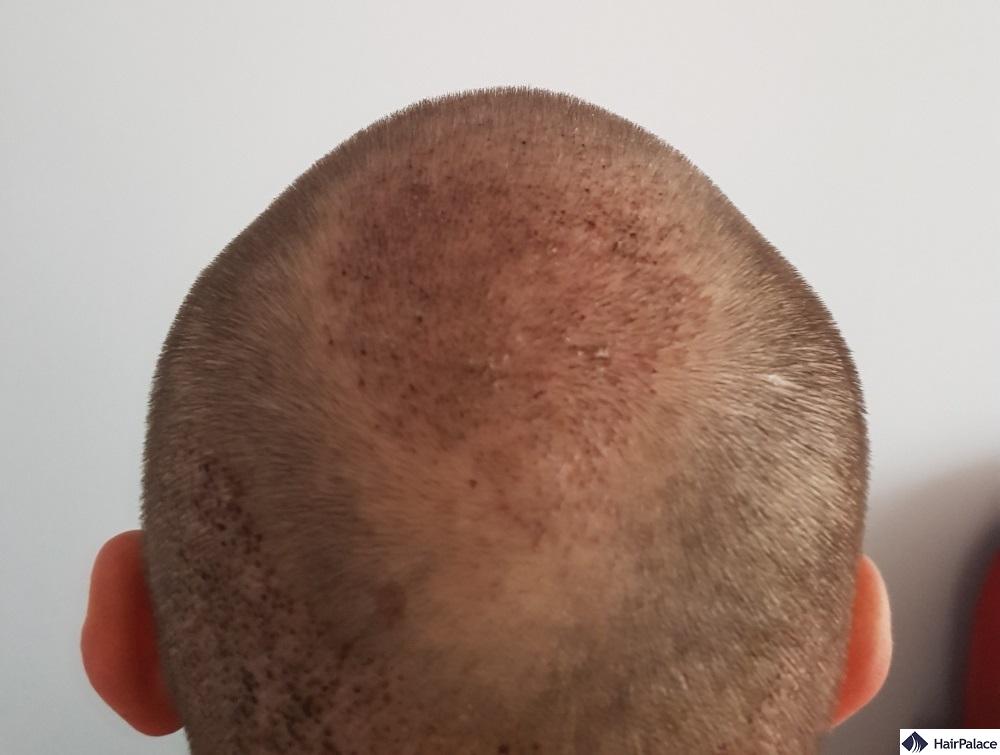
Following the procedure, your transplanted area will be tender and you may notice some hair transplant swelling.
Small scabs around the transplant sites are also common.
You must follow your surgeon’s aftercare instructions meticulously to ensure optimal healing and avoid hair transplant infection.
Most of the swelling should have subsided. The scabs begin to fall off during this period.
Some surgeons recommend gentle washing of the area to facilitate scab removal.
First 2 months after hair transplant surgery
It’s normal for the transplanted hairs to fall out during this phase, known as “shock loss.”
While alarming, this is a standard part of the process and only serves to make way for new growth.
You might start to notice the first signs of new hair growth. However, these initial hairs can be thin, colourless, and may resemble baby hair.
Crown hair transplant 4 months
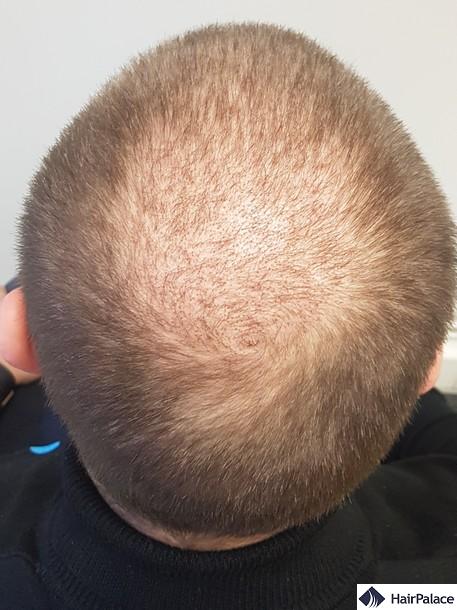
This is when you’ll begin to see more significant and noticeable hair growth and your coverage in the crown area will gradually improve.
The texture of the new hair will start to thicken and resemble the characteristics of the surrounding hair.
Crown hair transplant results 8 months
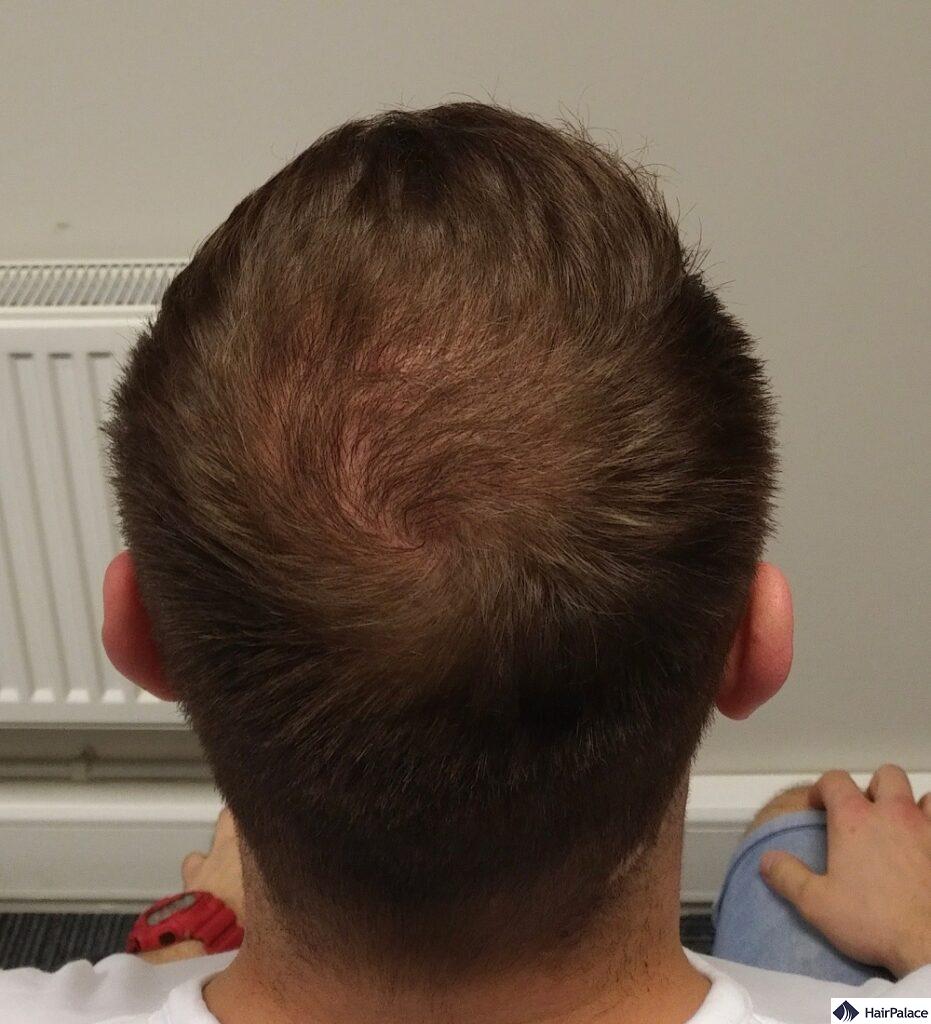
Hair growth continues to mature and thicken.
The transplanted hair will start to blend seamlessly with your existing hair, improving the overall density and appearance of the crown.
By the end of this period, you should have a good idea of the final result of your crown hair transplant.
Crown hair transplant final results (15-18 months)
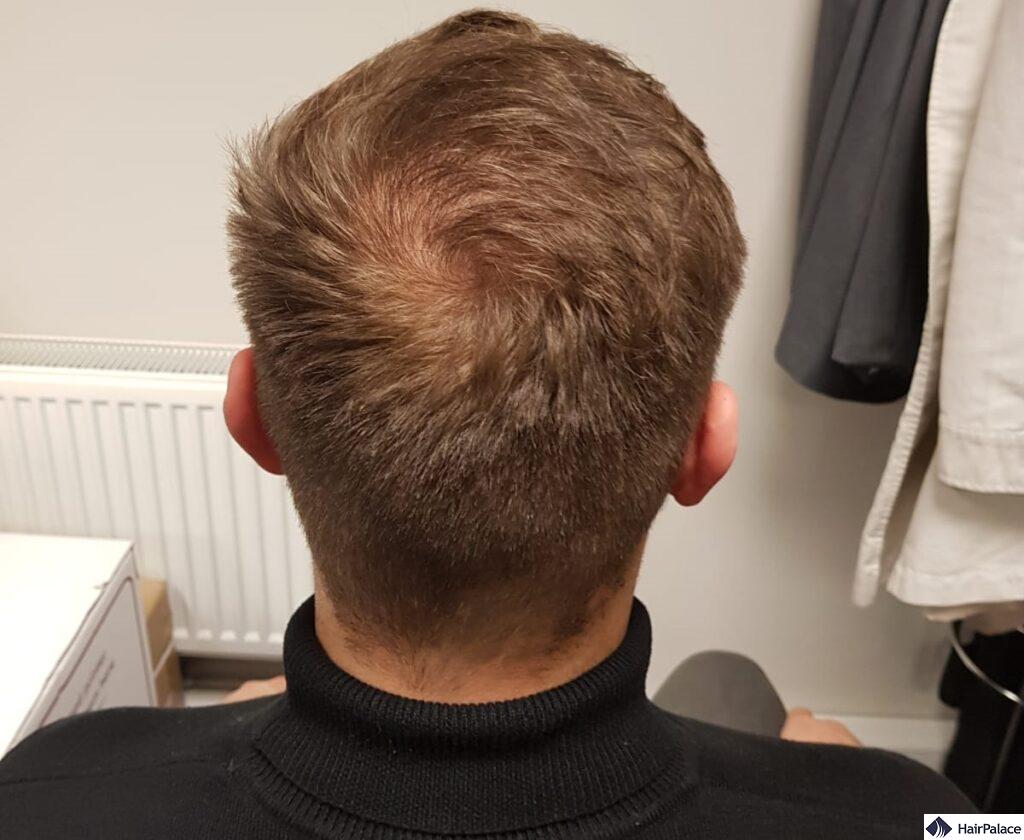
While most patients will see the full benefits of their hair transplant by the 12-month mark, some may notice continued improvements up to 18 months post-operation.
Why does the hair transplant crown timeline take longer?
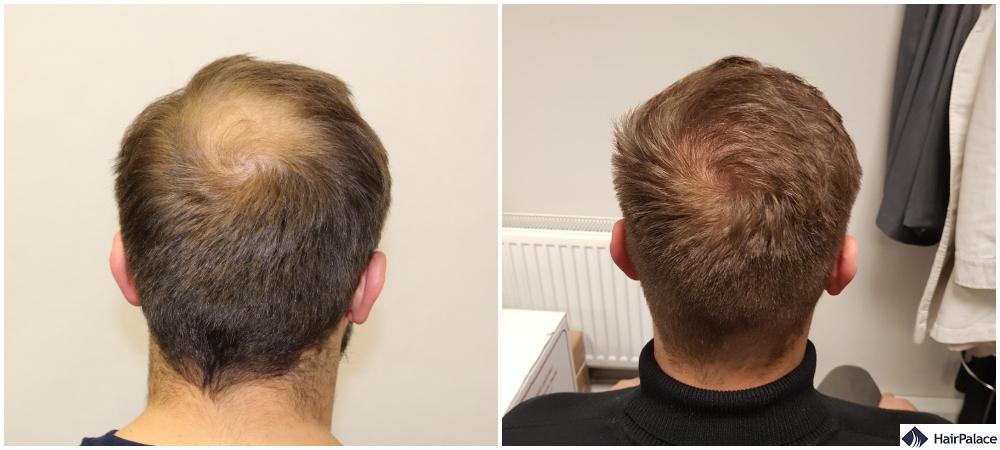
The hair transplant crown area growth timeline tends to take longer than other areas for a few reasons, each related to the unique characteristics of the scalp and hair growth cycles.
1. Blood Supply
The crown area, also known as the vertex, tends to have a slightly lower blood supply compared to the frontal region of the scalp.
The success and rate of hair growth after a hair transplant largely depend on the level of nourishment your hair follicles receive.
This means that the lesser blood supply can cause the crown to grow and heal a lot slower.
2. Hair Growth Cycles
Hair grows in cycles, and the synchronization of these cycles can vary across different parts of the scalp.
The crown area may have a higher proportion of hair follicles in the resting or shedding phases at any given time, which can delay the appearance of growth in the transplanted hair.
3. Angle and Direction of Hair
The crown area requires a careful, precise approach to mimic the natural swirl pattern of hair growth.
Achieving a natural-looking result involves meticulously angling each transplanted follicle to match this pattern.
The complexity of this process doesn’t directly slow growth, but the visual satisfaction and perceived density might take longer to appreciate.
4. Density and Coverage
The crown is a large, visible area where the hair loss is usually more noticeable.
Achieving the desired density and coverage can take time, especially if the hair loss is significant.
The perceived speed of growth and coverage may feel slower because the aesthetic goals involve a broad area with varying degrees of hair loss.
5. Individual Healing and Growth Rates
Individual differences in healing capacities and hair growth rates also play a significant role.
Factors such as age, health, diet, and even stress levels can influence how quickly one recovers from the transplant surgery and how fast the transplanted hair begins to grow.
6. Comparison with Other Hair Transplant Areas
Lastly, when comparing the crown to other areas like the hairline or mid-scalp, it’s important to remember that these areas are often the first to receive attention during hair restoration procedures.
This means that improvements in these areas are more immediately noticeable and satisfying, which can make the slower progress in the crown area seem even longer by comparison.
Patience is crucial throughout the hair transplant process, especially for the crown area.
You should follow post-operative recommendations closely to ensure you can achieve the results you’re looking for.
Hair transplant crown area results
Hair transplant crown area success rate
The success rare of crown hair transplants is similar to that of a regular hairline transplant.
Generally speaking, an FUE hair transplant has a success rate between 90 to 95%, though this may vary slightly based on individual circumstances.
The outcome will largely depend on the skill and experience of your surgeon, as well as the technique used by the clinic.
An FUE hair transplant surgery typically takes longer to complete but also promises higher success rates and faster healing.
A FUT procedure on the other hand is much more invasive which also means a significantly longer healing period.
FUE also offers better graft survival rates which also leads to a better overall result and a more aesthetically pleasing outcome.
The density, quality, and characteristics of the donor hair are also critical.
Patients with robust, healthy donor hair tend to experience better outcomes since the transplanted hair is more likely to survive and thrive in the new location.
The overall health of the patient, including the condition of the scalp, can affect the outcome.
Healthy individuals without chronic scalp conditions are more likely to see successful graft survival and growth.
Following the surgeon’s instructions for post-operative care is essential for ensuring the best possible outcome.
Proper aftercare can help prevent infection, reduce the risk of shock loss and support the healing and growth of transplanted hair.
A successful hair transplant in the crown area should provide a significant improvement in hair density and appearance but may not restore the hair to its original state.
Setting realistic expectations and having a clear understanding of what the procedure can achieve is crucial.
Last medically reviewed on September 13th, 2024
- ISHRS: 2020 Practice Census Resultshttps://ishrs.org/wp-content/uploads/2020/05/Report-2020-ISHRS-Practice-Census-05-22-20.pdf
- Rassman WR, et al. Follicular unit extraction: minimally invasive surgery for hair transplantation. Dermatol Surg 2002;28:720-8.https://doi.org/10.1046/j.1524-4725.2002.01320.x

